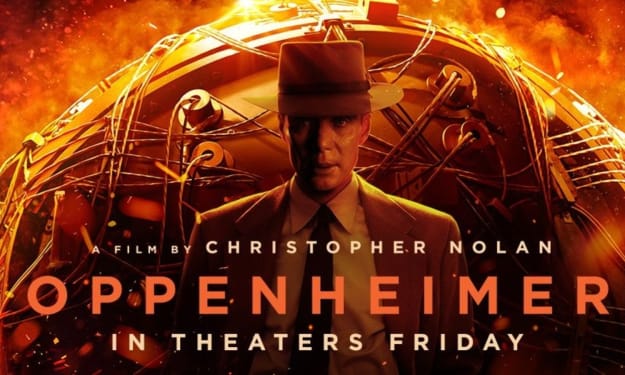Why researchers say we really want to send timekeepers to the moon — soon
Scientific Research

Maybe the best, mind-bowing characteristic of our universe is the intrinsic issue with timekeeping: Seconds tick by very somewhat quicker on a mountain than they do in the valleys of Earth.
For useful purposes, the vast majority don't need to stress over those distinctions.
Yet again however a restored space race has the US and its partners, as well as China, running to make super durable settlements on the moon, and that has brought the eccentricities of time, to the front.
On the lunar surface, a solitary Earth day would be approximately 56 microseconds more limited than on our home planet — a little number that can prompt critical irregularities over the long run.
The's organization will probably work with worldwide accomplices to set up another technique for following time, explicitly for the moon, that space-faring countries consent to notice.
A new notice from the White House likewise guided NASA to delineate its arrangements for this new time scale by December 31, referring to it as "primary" to recharged US endeavors to investigate the lunar surface. The update likewise asks that NASA execute such a framework toward the finish of 2026, that very year the space organization is meaning to return space travelers to the moon without precedent for fifty years.
For the world's watches, the next few months could be urgent for sorting out some way to precisely keep lunar time — and agree on how, when and where to put clocks on the moon.
Such a system will be essential for people visiting our nearest heavenly neighbor, Gramling told CNN.
Space travelers on the moon, for instance, will pass on their territories to investigate the surface and do science examinations, she said. They're additionally going to speak with each other or driving their moon carriages while on the lunar surface.
"While they're exploring comparative with the moon," Gramling said, "time should be comparative with the moon."
A short history of Earth time
Straightforward sundials or stone developments, which track shadows as the sun passes above, mark a day's movement similarly as the moving periods of the moon can log the death of a month on The planet. Those normal watches have saved people on time for centuries.
However, maybe since mechanical clocks got some decent forward movement in the mid fourteenth hundred years, clockmakers have developed always persnickety about accuracy.
Demanding the estimation of seconds additionally developed more convoluted in the mid 1900s, on account of Albert Einstein, the German-conceived physicist who shook established researchers with his hypotheses of extraordinary and general relativity.
"Darn that Einstein fellow — he thought of general relativity, and numerous odd things emerge from it," said Dr. Bruce Betts, boss researcher at The Planetary Society, a philanthropic space vested party. "One of them is that gravity dials time back."
General relativity is muddled, yet in wide terms, a structure makes sense of what gravity means for existence.
Envision that our nearby planet group is a piece of texture suspended in the air. That texture is reality itself, which — under Einstein's hypotheses — are inseparably connected. What's more, every heavenly body inside the planetary group, from the sun to the planets, resembles a weighty ball sitting on the texture. The heavier the ball, the more deeply the divot it makes, twisting existence.
Indeed, even the possibility of a natural "second" is a humanmade idea that is interesting to gauge. Furthermore, it was Einstein's hypothesis of general relativity that made sense of why time elapses somewhat more leisurely at lower heights — in light of the fact that gravity has a more grounded impact more like an enormous item (like our home planet).
NASA and its worldwide accomplices are as of now wrestling with this problem.
Researchers aren't simply hoping to make a new "time region" on the moon, as certain titles have proposed, said Cheryl Gramling, the lunar position, route, and timing and guidelines lead at NASA's Goddard Space Flight Center in Maryland. Rather, the space office and its accomplices are hoping to make an altogether new "time scale," or arrangement of estimation that records for that reality that seconds tick by quicker on the moon, Gramling noted.
Researchers have tracked down a cutting edge answer for every one of the confusions of relativity for timekeeping on The planet: To represent indistinct contrasts, they have set up two or three hundred nuclear clocks at different areas across the globe. Nuclear clocks are super exact instruments that utilization the vibration of iotas to quantify the progression of time, and those clocks — in accordance with Einstein's hypotheses — tick more slow the nearer to Earth's surface they sit.
The readings from nuclear clocks all over the planet can be found the middle value of for a wide yet precise as conceivable feeling of time for planet Earth in general, giving us Composed Widespread Time, or UTC. In any case, sometimes "jump seconds" are figured in to keep UTC in accordance with slight changes in Earth's speed of pivot.
This calculated keeping of time helps make the advanced world go round — figuratively talking, said Kevin Coggins, agent partner overseer and program chief for NASA's Space Interchanges and Route Program.
"Assuming you've investigated time on the Earth, you understand it is the basic empowering agent for everything: the economy, food security, exchanging, the monetary local area, even oil investigation. They utilize exact clocks," Coggins said. "In everything matters in present day culture."
Space, time: The nonstop inquiry
Assuming time moves distinctively on the pinnacles of mountains than the shores of the sea, you can envision that things move much more odd the farther away from Earth you travel.
To add more complexity: Time likewise elapses more slow the quicker an individual or rocket is moving, as per Einstein's hypothesis of exceptional relativity.
Space travelers on the Worldwide Space Station, for instance, are fortunate, said Dr. Bijunath Patla, a hypothetical physicist with the US Public Establishment of Guidelines and Innovation, in a telephone interview. However the space station circles around 200 miles (322 kilometers) over Earth's surface, it additionally goes at high rates — circling the planet 16 times each day — so the impacts of relativity to some degree counterbalance one another, Patla said. Hence, space travelers on the circling lab can undoubtedly utilize Earth time to remain on time.
For different missions — it's not really basic.
Luckily, researchers as of now have many years of involvement battling with the intricacies.
Rocket, for instance, are outfitted with their own tickers called oscillators, Gramling said.
"They keep up with their own time," Gramling said. "What's more, the greater part of our activities for space apparatus — even space apparatus that are the exit plan at Pluto, or the Kuiper Belt, as New Skylines — (depend on) ground stations that are back on The planet. So all that they're doing needs to associate with UTC."
Be that as it may, those shuttle likewise depend on their own kept time, Gramling said. Vehicles investigating profound into the nearby planet group, for instance, need to be aware — in view of their own time scale — when they are moving toward a planet in the event that the shuttle needs to involve that planetary body for navigational purposes, she added.
For quite some time, researchers have additionally had the option to notice nuclear tickers that are tucked on board GPS satellites, which circle Earth around 12,550 miles (20,200 kilometers) away — or around one-nineteenth the distance between our planet and the moon.
Concentrating on those clocks has given researchers an incredible beginning stage to start extrapolating further as they set off to lay out another time scale for the moon, Patla said.
"We can undoubtedly look at (GPS) timekeepers to clocks on the ground," Patla said, adding that researchers have figured out how to delicately dial GPS clocks back, making them tick more in-accordance with Earth-bound clocks. "Clearly, it's not so natural as it sounds, yet it's simpler than making a wreck."
For the moon, in any case, researchers probably won't look to dial clocks back. They desire to precisely gauge lunar time for all intents and purposes — while likewise guaranteeing it very well may be connected back to Earth time, as indicated by Patla, who as of late co-wrote a paper specifying a structure for lunar time.
The review, in case it wasn't already obvious, additionally endeavored to pinpoint precisely how far separated moon and Earth time are, as evaluations have faltered somewhere in the range of 56 and 59 microseconds each day.
Timekeepers on the moon's equator would tick 56.02 microseconds quicker each day than times at the World's equator, as indicated by the paper.
Lunar perfect timing
What researchers cannot deny is that they need to get accuracy timekeeping instruments to the moon.
Precisely who pays for lunar clocks, which kind of clocks will go, and where they'll be situated are questions that stay up in the air, Gramling said.
"We need to sort out all of this," she said. "I don't think we know yet. I figure it will be a mixture of a few distinct things."
Nuclear timekeepers, Gramling noted, are perfect for long haul soundness, and precious stone oscillators enjoy a benefit for momentary dependability.
"You never trust one clock," Gramling added. "Also, you never trust two clocks."
Tickers of different kinds could be set inside satellites that circle the moon or maybe at the exact areas on the lunar surface that space travelers will one day visit.
Concerning value, a nuclear clock deserving of space travel could cost around a couple million bucks, concurring Gramling, with precious stone oscillators coming in considerably less expensive.
In any case, Patla said, the end product tends to reflect its price.
"The extremely modest oscillators might be off by milliseconds or even 10s of milliseconds," he added. "Furthermore, that is significant on the grounds that for route purposes — we want to have the tickers synchronized to 10s of nanoseconds."
An organization of tickers on the moon could work in show to illuminate the new lunar time scale, similarly as for UTC on The planet.
(There will not, Gramling added, be different time regions on the moon.
About the Creator
Alfred Wasonga
Am a humble and hardworking script writer from Africa and this is my story.
Enjoyed the story? Support the Creator.
Subscribe for free to receive all their stories in your feed. You could also pledge your support or give them a one-off tip, letting them know you appreciate their work.






Comments
There are no comments for this story
Be the first to respond and start the conversation.